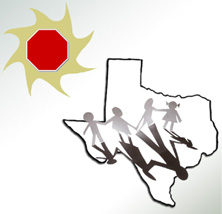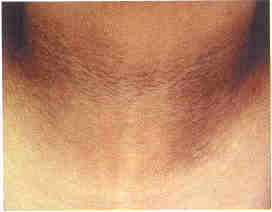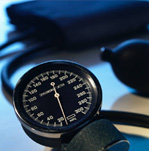
 |
The Texas Risk Assessment for Type 2 Diabetes in Children is a legislatively mandated program developed, coordinated, and administrated by The University of Texas Rio Grande Valley Border Health Office (BHO). The program assesses children who may be at high risk of developing Type 2 Diabetes in Texas Education Agency Regional Education Service Centers 1, 2, 3, 4, 10, 11, 13, 15, 18, 19, and 20. During vision/hearing and scoliosis screenings of 1st, 3rd, 5th, and 7th graders in public and private schools, certified individuals assess children for the acanthosis nigricans marker, a skin condition that signals high insulin levels. Children who are positively identified with the marker undergo additional assessments of body mass index (BMI), BMI percentile, and blood pressure. Referrals are issued to the parents of these children, alerting each parent of their child's risk factors and encouraging further evaluation from a health professional. Becoming aware of and understanding what the risk factors suggest can help stimulate the changes necessary to prevent or delay future health problems for children at risk of developing Type 2 Diabetes and other conditions. |
 |
| Acanthosis nigricans is a cutaneous marker associated with hyperinsulinemia and insulin resistance and is considered a risk factor for Type 2 Diabetes and other chronic diseases. Because of the increasingly alarming rates of children developing Type 2 Diabetes, acanthosis nigricans assessments are important and can help identify children with high insulin levels who may be at-risk for developing the disease. Children who are positively identified with the AN marker undergo additional assessments of body mass index (BMI), BMI percentile, and blood pressure. |  |
 |
Body Mass Index (BMI) is a measurement that helps determine overweight status by using a mathematical formula that takes into account a child's height and weight. After BMI is calculated for children and teens with acanthosis nigricans, the BMI number is plotted on Center for Diseases Control and Prevention (CDC) BMI-for-age growth charts. A child with a BMI greater than or equal to the 95th percentile has a greater chance of maintaining obesity into adulthood. This is also significant since studies have shown that BMI above the 95th percentile is associated with elevated blood pressure, hyperlipidemia, and obesity-related disease and mortality. Children whose BMI falls between the 85th and 94th percentiles should be evaluated carefully and should be given particular attention to secondary complications of obesity. BMI categories are identified as obesity, overweight, normal, and underweight. |
Hypertension increases the risk for cardiovasculardisease and is a complication of obesity. Hypertension has also been associated with insulin resistance and hyperinsulinemia. Elevated blood pressure in childhood correlates with hypertension in early adulthood, supporting the need to track blood pressure in children. Certified personnel perform two blood pressure measures on children who have the AN marker. Blood pressure is taken on the child’s right arm in a controlled environment, giving three to five minutes of rest in between each reading as recommended by the National High Blood Pressure Education Program Working Group on High Blood Pressure in Children and Adolescents. The blood pressure categories are identified as hypertensive, prehypertensive, or normal. |
 |
During vision/hearing and scoliosis screenings of 1st, 3rd, 5th and 7th graders in public and private schools, certified individuals assess children for the acanthosis nigricans marker, a skin condition that signals high insulin levels. Children who are positively identified with the marker undergo additional assessments of body mass index (BMI), BMI percentile, and blood pressure. Certified individuals make medical referrals for children with AN,which include BMI, degree of overweight, and blood pressure. Risk assessment referrals are issued to the parents of these children, alerting each parent of their child's risk factors and encouraging further evaluation from a health professional. Becoming aware of and understanding what the risk factors suggest can help stimulate the changes necessary to prevent or delay future health problems for children at risk of developing Type 2 Diabetes and other conditions. |

|
Border Health Office 1201 West University Dr EUNFS 1.201 (Annex South Bldg.) Edinburg TX 78539-2999 Phone: 956-665-8900 Email: bho@utrgv.edu |